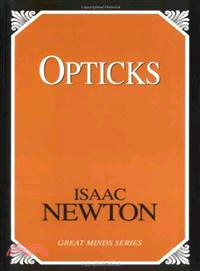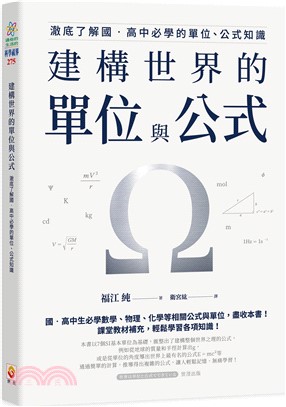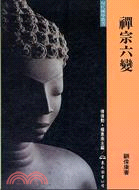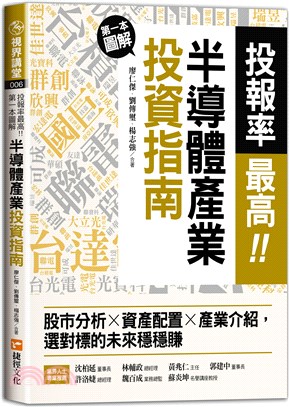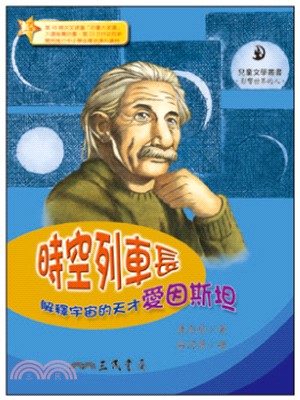Opticks
- ISBN13:9781591020950
- 出版社:Prometheus Books
- 作者:Isaac Newton Sir
- 裝訂/頁數:平裝/414頁
- 規格:20.3cm*13.3cm*1.9cm (高/寬/厚)
- 出版日:2003/08/01
定 價:NT$ 665 元
絕版無法訂購
相關商品
商品簡介
作者簡介
商品簡介
Before Newton completed his masterpiece, The Principia Mathematica, he had established his reputation with this treatise on the properties of light. Though on a narrower topic, this work is as impressive in its own right as The Principia, for it provided a scientific analysis of light that became the basis of our modern understanding. Based on experiments in which a beam of light was passed through a prism, Newton showed that white light was complex and could be analyzed as a blend of the various colors of the spectrum. Divided into three books, the first describes his experiments with the spectrum. The second deals with the ring phenomenon, in which concentric rings of colors appear in the thin layer of air separating a lens and an underlying plate of glass. The third book describes his work on diffraction. Also discussed is Newton's theory that light consists basically of "material corpuscles" in motion.
Though clearly intended for fellow scientists this classic monument of modern physics is surprisingly readable and understandable for nonspecialists.
Though clearly intended for fellow scientists this classic monument of modern physics is surprisingly readable and understandable for nonspecialists.
作者簡介
ISAAC NEWTON?was born in Woolsthorpe, Lincolnshire, Eng-land, on December 25, 1642. His father having died before his birth and his mother having remarried, Newton was sent to live with his maternal grandmother in the neighboring town of Grantham, where he attended school. An inattentive student, Newton nonetheless showed a great aptitude for making mechani-cal contrivances such as windmills and water clocks. While at school, Newton boarded with an apothecary, who may have imparted to the youngster a lifelong love of chemical experiments.
In 1656, following the death of her second husband, Newton's mother removed him from school and brought him back to Woolsthorpe with the idea of making her son a farmer. Newton's teacher at Grantham, recognizing the boy's talents, prevailed upon her to allow Newton to prepare for entrance to Cambridge University. He entered Trinity College, Cambridge, in 1661, under the tutelage of Isaac Barrow, Lucasian Professor of Mathematics, and took his degree four years later.
Between 1665 and 1667, Newton made great strides in his method of "fluxions" (an early form of differential calculus) and began work on gravitation. It was also at this time that Newton inaugurated his studies on the nature of light: he demonstrated that differences in color resulted from differences in refrangibility, i.e., the ability of a ray of light to bend when passed through a refracting medium. In 1667, Newton returned to Cambridge from Woolsthorpe (where he had gone to escape the plague); two years later he succeeded Barrow as Lucasian Professor. In 1672 Newton was elected to the Royal Society.
Newton's great work,?Philosophiae naturalis principia mathematica,?or?The Mathematical Principles of Natural Philoso-phy?(1687), grew out of his ongoing investigations into gravitation and planetary motion. Written over a period of only eighteen months, this book was immediately hailed as a masterpiece: it?demonstrated how the law of gravitation could explain diverse phenomena, ranging from the tides to the irregularities of the moon's motion, and made possible a mathematical principle, unrealized up to that time, of the workings of a dynamic universe. Although Newton's system needed to be revised in the twentieth century in view of the theory of relativity and quantum mechanics, it remains valid for systems of ordinary dimensions, involving velocities that do not approach the speed of light.
Newton's contributions to science brought him fame and financial security: in addition to his professorship at Cambridge, Newton served for two years as a member of the Convention Parliament following the overthrow of King James II during the "Glorious Revolution" of 1688. In 1696 Newton was ap-pointed warden, and later master, of the mint, a lucrative position he held until his death. In 1704 he was made president of the Royal Society, and in 1705 he received a knighthood from Queen Anne. While a member of Parliament, Newton came into contact with such luminaries as the philosopher John Locke and the diarist Samuel Pepys.
Newton's life was not without bitterness, however: a pro-tracted controversy raged over whether Newton or Gottfried Wilhelm von Leibniz had been first in the invention of calculus, which strained scientific relations between England and the Continent. And, despite the?Principia's?enthusiastic reception, Newton's system would not be fully accepted among scientists and in university teaching until after his death.
Following his retirement from Cambridge in 1701, Newton prepared revised editions of the?Principia?(1713, 1726) and pub-lished his second great treatise, the?Opticks,?in 1704. He died in Kensington, England, on March 20, 1727.
In 1656, following the death of her second husband, Newton's mother removed him from school and brought him back to Woolsthorpe with the idea of making her son a farmer. Newton's teacher at Grantham, recognizing the boy's talents, prevailed upon her to allow Newton to prepare for entrance to Cambridge University. He entered Trinity College, Cambridge, in 1661, under the tutelage of Isaac Barrow, Lucasian Professor of Mathematics, and took his degree four years later.
Between 1665 and 1667, Newton made great strides in his method of "fluxions" (an early form of differential calculus) and began work on gravitation. It was also at this time that Newton inaugurated his studies on the nature of light: he demonstrated that differences in color resulted from differences in refrangibility, i.e., the ability of a ray of light to bend when passed through a refracting medium. In 1667, Newton returned to Cambridge from Woolsthorpe (where he had gone to escape the plague); two years later he succeeded Barrow as Lucasian Professor. In 1672 Newton was elected to the Royal Society.
Newton's great work,?Philosophiae naturalis principia mathematica,?or?The Mathematical Principles of Natural Philoso-phy?(1687), grew out of his ongoing investigations into gravitation and planetary motion. Written over a period of only eighteen months, this book was immediately hailed as a masterpiece: it?demonstrated how the law of gravitation could explain diverse phenomena, ranging from the tides to the irregularities of the moon's motion, and made possible a mathematical principle, unrealized up to that time, of the workings of a dynamic universe. Although Newton's system needed to be revised in the twentieth century in view of the theory of relativity and quantum mechanics, it remains valid for systems of ordinary dimensions, involving velocities that do not approach the speed of light.
Newton's contributions to science brought him fame and financial security: in addition to his professorship at Cambridge, Newton served for two years as a member of the Convention Parliament following the overthrow of King James II during the "Glorious Revolution" of 1688. In 1696 Newton was ap-pointed warden, and later master, of the mint, a lucrative position he held until his death. In 1704 he was made president of the Royal Society, and in 1705 he received a knighthood from Queen Anne. While a member of Parliament, Newton came into contact with such luminaries as the philosopher John Locke and the diarist Samuel Pepys.
Newton's life was not without bitterness, however: a pro-tracted controversy raged over whether Newton or Gottfried Wilhelm von Leibniz had been first in the invention of calculus, which strained scientific relations between England and the Continent. And, despite the?Principia's?enthusiastic reception, Newton's system would not be fully accepted among scientists and in university teaching until after his death.
Following his retirement from Cambridge in 1701, Newton prepared revised editions of the?Principia?(1713, 1726) and pub-lished his second great treatise, the?Opticks,?in 1704. He died in Kensington, England, on March 20, 1727.
主題書展
更多主題書展
更多書展本週66折
您曾經瀏覽過的商品
購物須知
外文書商品之書封,為出版社提供之樣本。實際出貨商品,以出版社所提供之現有版本為主。部份書籍,因出版社供應狀況特殊,匯率將依實際狀況做調整。
無庫存之商品,在您完成訂單程序之後,將以空運的方式為你下單調貨。為了縮短等待的時間,建議您將外文書與其他商品分開下單,以獲得最快的取貨速度,平均調貨時間為1~2個月。
為了保護您的權益,「三民網路書店」提供會員七日商品鑑賞期(收到商品為起始日)。
若要辦理退貨,請在商品鑑賞期內寄回,且商品必須是全新狀態與完整包裝(商品、附件、發票、隨貨贈品等)否則恕不接受退貨。




